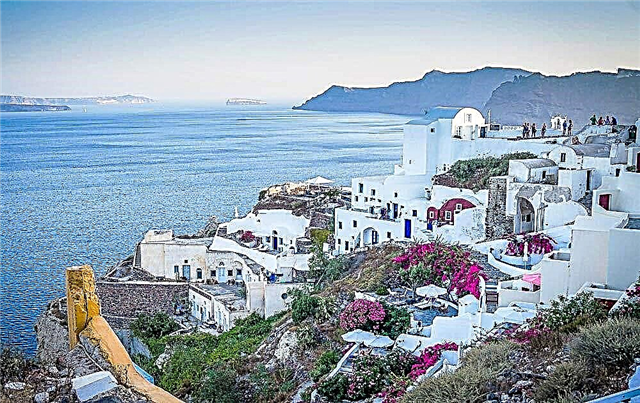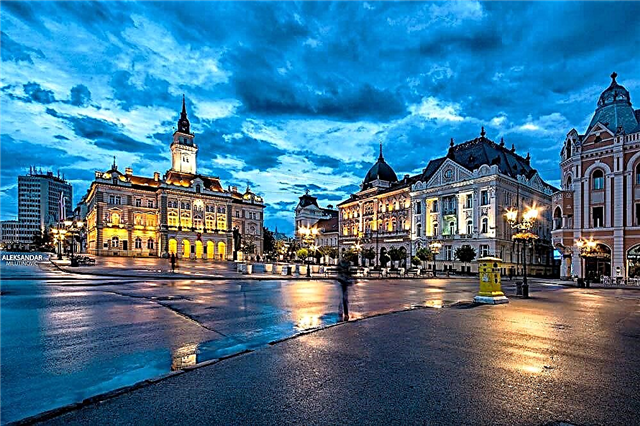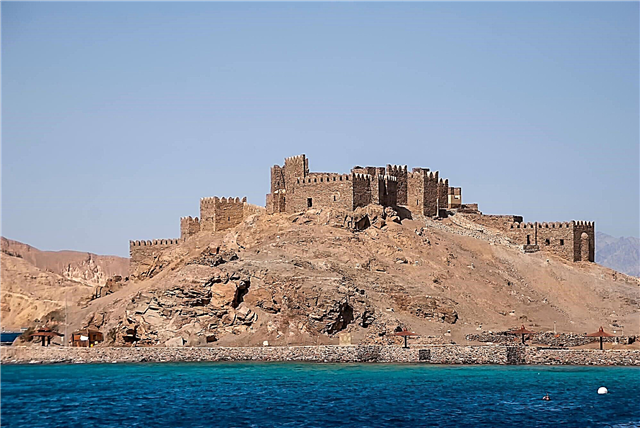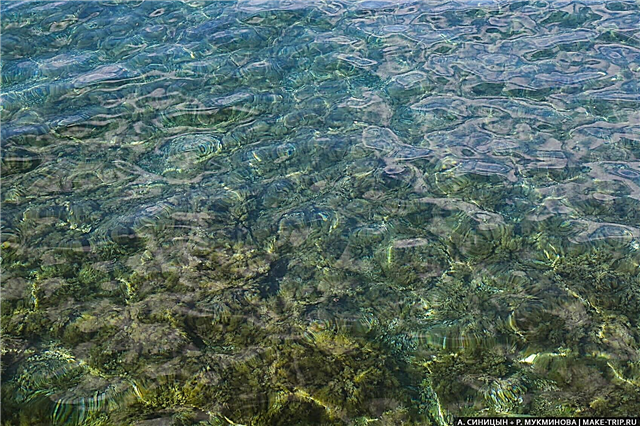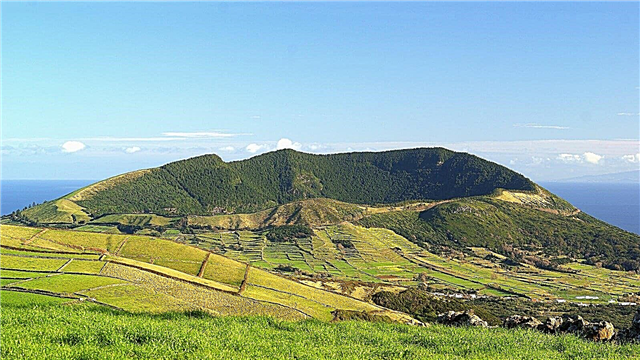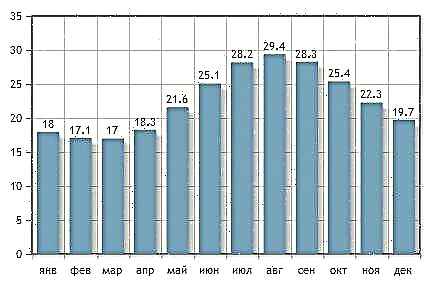Deep lakes are found on all continents. The border zone of Argentina and Chile is especially rich in such reservoirs, given the area of the countries, they will be among the leaders. As for the origin of deep-water lakes, there is a complete variety: glacial, volcanic, tectonic. Roughly the same picture in terms of temperature conditions.
But water bodies with great depth often have differences from shallow water bodies. Some have an atypical mineral composition or inhabitants that cannot be found anywhere else. Richness in fish is typical for most of the representatives of the list, although there are exceptions. The tourism industry is also not developed everywhere, but there is potential and is visible to the naked eye.
The deepest lakes on earth
Baikal
It is the deepest lake in the world. Also, the largest fresh water reservoir not only in Russia, but on the entire planet. The Angara flows out of it, and many rivers flow into it. The distribution area of many species of animals and plants is limited. There are many natural monuments in the area: Cape Ludar, Ushkany Islands, Chersky Peak, etc. In winter, the surface is almost completely covered with a thick layer of ice. Although the lake is protected, there are environmental problems.
Depth - 1642 meters.

Tanganyika
It is the longest freshwater lake with an area of 32,900 km². It is located in Central Africa, while it belongs to four countries at once. A hot climate influences changes in water level at different times of the year. When the rivers flowing in partially dry up, the lake follows suit. Special problems with the environment in the north of the lake, since there was a discharge of waste from enterprises, and the fishery was put on stream.
The depth is 1470 meters.

East
Features of the location - the lake is located in Antarctica - could not but affect the characteristics. There is no larger (15,790 km²) subglacial lakes in the world. At the same time, the water is warmed up to + 10 ° C due to geothermal sources. A Russian research station of the same name is based in the immediate vicinity. The study of the microorganisms that live in these waters is not yet complete.
The depth is 1200 meters.

Caspian Sea
It falls into the zone of control of five states, including Russia. The economic activity associated with the use of the lake, which has an area of 371,000 km², is varied: there are oil deposits, fishery is carried out, there are ports and places for recreation on the coast. It is the largest lake in the world. In terms of tourism, it relies on the nearby mineral springs, and mud therapy is also popular. However, there are infrastructure problems.
The depth is 1025 meters.

San Martin
Located in South America, the lake has an area of 1058 km². Particularly noteworthy is the shape of the reservoir: it is divided into wide, uneven sleeves. The specificity of the name is related to this: those parts-processes that belong to Chile have a different name for the locals - O'Higgins. The lake is fed by small rivers flowing into it, as well as by the larger Mayer.
The depth is 836 meters.

Nyasa
Also called Malawi, it covers an area of 29,600 km². It belongs to three East African countries, which makes it difficult to agree on the environmental protection of the territory. It is elongated in shape, practically has no sharp bends. Used for fishing, but the coastal area is sparsely populated. The area is picturesque, as there are different types of relief, many species of rare plants and fauna.
The depth is 706 meters.

Issyk-Kul
It is located in Kyrgyzstan and has an area of 6236 km². It is drainless and is fed by 80 tributaries. 4 picturesque bays are used for fishing, tourism and as ports. Travelers are in many ways attracted by the combination of the spirit of the types of climate: mountain and sea. There are places for camping, as well as full-fledged resort areas. The beach season is short, from mid June to late August.
The depth is 702 meters.

Big Slave
The peculiarity of the Canadian lake, which has an area of 28,568 km², is an ice crust that covers the surface for 8 months. The thickness of the cover allows the reservoir to be used as a full-fledged road for trucks in winter. The vegetation on the opposite coasts is different: in the west - dense forests, and in the east - tundra. There are mines in the area and a search for diamonds is underway.
The depth is 614 meters.

Crater
Located in the United States on the territory of the national park of the same name. The area is 53.2 km², the shape is round, to which the reservoir owes its volcanic origin. Local attraction - "Lake Old Man" - a log floating in the lake in an upright position for a hundred years. Its safety is ensured by low temperatures. Hydrothermal activity is maintained, so eruptions are still possible.
The depth is 594 meters.

Matana
The Indonesian lake with an area of 164.1 km² is of tectonic origin. Its shores are rich in nickel ore deposits. This caused a number of controversies: the reservoir is an important source of drinking water for the region, and the development of deposits has led to pollution. The composition of water at a depth is unique: the oxygen content tends to zero, but iron compounds prevail over other elements.
The depth is 590 meters.

Buenos Aires
Located on the borders of Argentina and Chile. It covers an area of 1850 km² and is of glacial origin. At the end of the 19th century, the channel of one of the tributaries was artificially changed, which affected the water level in the lake, albeit insignificantly. The western and eastern parts of the reservoir are very different in appearance and vegetation. One of the attractions is the marble grottoes.
The depth is 586 meters.

Hornindalsvatnet
Norwegian lake with an area of 50.42 km². There is a contradiction between the official data regarding the depth, and those indicators that were obtained when laying the cable along the bottom of the reservoir. The telephone company announced that the lowest point of the lake is 612 meters from its surface. In the middle of summer, a massive marathon is held along the coast. It is considered the cleanest of the lakes of Scandinavia.
The depth is 514 meters.

Quesnel
Located in Canada, has a glacial origin and an area of 266 km². The shape is oblong, there are three distinctly marked sleeves. The researchers measured that the water in the lake is completely renewed in 10 years. A popular tourist destination: some come for scenic views, some go fishing, for example, for rainbow trout. Small berths have been built along the banks; water transport runs regularly.
The depth is 506 meters.

Sarez
It is located on the territory of Tajikistan and covers an area of 80 km². It was formed due to the blockage of the channel and the basin of the mountain river Bartang. The water level fluctuates. In theory, it is dangerous for settlements downstream, since in the event of a breakthrough of natural barriers, it can bring down huge volumes of water on them. There are many species of flowering plants on the banks, but there are few fish in the reservoir.
The depth is 505 meters.
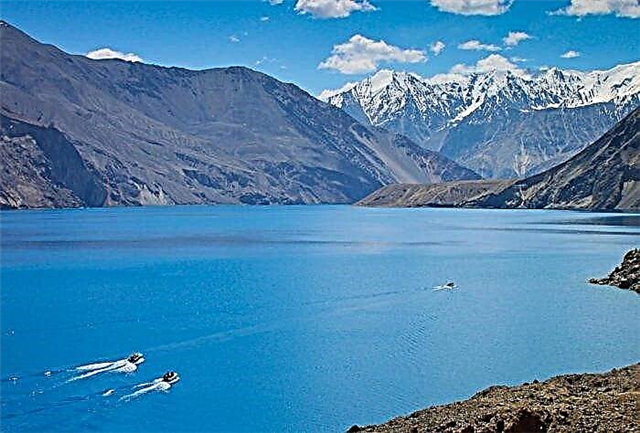
Toba
Formed in the caldera of the eponymous volcano. Belongs to Indonesia and has an area of 1103 km². The tourism industry relies on the interest of travelers in the ethnic culture of these places, especially in the Batak people. Another popular destination for foreigners is ecotourism. The influx of guests occurs once a year: in May, when the weather becomes warmest, and on Chinese New Year in February.
The depth is 505 meters.

Tacho
Located in the USA, it is one of the popular holiday destinations, especially for domestic tourism. Area - 495 km², coastline - 114 km. There is one island - Fannett. It is small in size, but it rises above the water due to its mountain-like shape and is clearly visible from many points.There are dense forests around, and on the coast itself there are few settlements, although they are oriented, among other things, to visitors.
Depth - 501 meters.
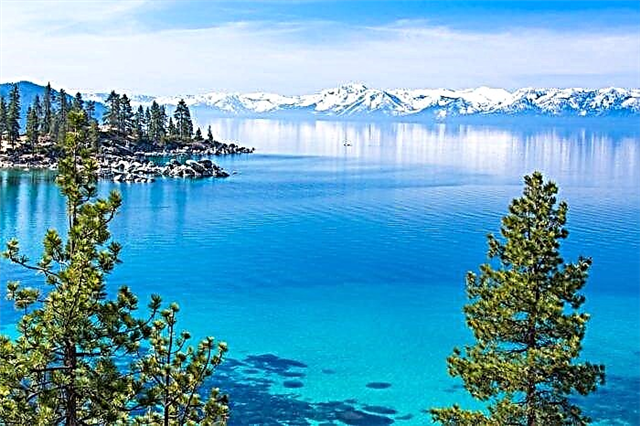
Lago Argentino (500 m)
The area of the Argentine freshwater lake is 1415 km². The largest in the country, mapped in the 80s of the 18th century. Refers to the territory of the national park. Food is provided due to the melting of glaciers and rivers that carry melt water to the lake. Tourists come here for fishing, and also because of the unusual species not found anywhere else in South America.
The depth is 500 meters.

Kivu
It is located on the territory of Central Africa and belongs to two countries at once. Belongs to the list of the African Great Lakes. It is connected with Lake Tanganyika through the Ruzizi River. The area is 2700 km². The most famous story related to the reservoir took place in 1948. A nearby volcano became active for a long time, and the water in the Kivu boiled, and all the fish was boiled.
The depth is 480 meters.

Salswannet
There are discrepancies about the depth of this Norwegian lake. Perhaps, official sources underestimate it a little. The area is 44.77 km². At depth, there is practically no oxygen in the water. In addition, salinity is higher there, which also affects the density of the water. The reasons for such deviations from the norm can be hidden both in the origin of the reservoir and in factors that have not yet been discovered. Research continues to this day.
Depth - 464 meters.

Nahuel Huapi
The name is translated from the local dialect as "jaguar island". Belongs to the territory of Argentina and covers an area of 530 km². The shape is elongated, there are branch sleeves. The largest of the lakes in the local national park. Tourism is widely developed. There are many hotels in the cities on the coast. Visitors are attracted by ethnic groups, history, ecological features. There are several types of travel programs.
Depth - 464 meters.

Hauroko
Located in New Zealand, the southernmost in the country, belongs to the territory of the national park. The area is 63 km². It is very curved in shape and resembles the letter "S". There are many camping sites nearby, but there are no hotels or shops. Mass tourism is absent, although the lake is often used as a staging post for long journeys.
Depth - 462 meters.

Pueirredon
Another name is Cochran. Belongs to the territory of Chile and Argentina and has an area of 270 km². Nearby are the southern Andes, the reservoir is powered by the glacier. The shores are mostly high, mountainous or hilly. There are small areas of land on the surface of the water, but they are too small to be called islands. The vegetation is often low, there is a lot of fish, although there is no constant fishing.
The depth is 460 meters.

Tinsho
It is located in Norway and has an area of 51.43 km². The reservoir was used by the Nazis during the occupation of the country. Local waters with an atypical composition were to be used for nuclear research. Already in the 90s, one of their sunken ferries was discovered. In addition, previously unknown fish species have been found. The study of the features of the lake continues to this day.
The depth is 460 meters.

Adams Lake
It is located in Canada and belongs to the glacial type of formation. The area is approximately 137 km². The lake is elongated and narrow. The bends of the coastline are rather smooth and gradually taper at the extreme points. Popular as an object of domestic tourism: locals go here to fish. The main commercial fish species is rainbow trout.
The depth is 457 meters.

Chelan
Located in the United States, its name is translated from the language of the Indians as "deep water". Area - 135 km², the largest in the state of Washington. The river of the same name flows out, and flows into the Stkhekin. Belongs to the Northern Cascades National Park. A boarding house has been built on the coast, which is open all year round. There are several settlements, including the city of the same name in the southeast.
Depth - 453 meters.

Wang
A drainless Turkish salt water lake is located on an area of 3574 km². It is the largest of the soda lakes in the world. The name can be translated as "inhabited place". It is surrounded by several mountain systems, which affects the climate and air saturation. There are several islands in the reservoir. Some have preserved Armenian sights: monasteries, churches, etc.
Depth - 451 meters.

Poso
The Indonesian lake has an area of 323.2 km². The lake attracts tourists with its nature. Particularly noteworthy are the shrimp and snail species found here. Also, local coastal settlements are ready to offer guests a lot of interesting experiences: the national flavor is adjacent to the developed infrastructure and service. There are sandy beaches and hotels for almost every budget.
The depth is 450 meters.

Fagnano
Refers to the possessions of Chile and Argentina. It bears the name of a Catholic missionary who visited these lands at the end of the 19th century. The largest (593 km²) of the Tierra del Fuego lakes. It is the source of the Asopardo River. It is part of the national park from the Argentinean side. Jeep trips around the coastal area are popular among tourists. Local operators offer this service to everyone.
The depth is 449 meters.

Big Bearish
Location - the Arctic Circle, belongs to Canada and covers an area of 31,153 km². There is a uranium deposit, but it is abandoned due to the unprofitability of mining. The lake is navigable, but only for a small part of the year, since most of the time the surface of the reservoir is covered with a crust of ice. There is only one settlement on the coast, which once served as a fort.
The depth is 446 meters.

Manapouri
Belongs to the territory of the New Zealand National Park. Area - 142 km², glacial origin. The name translates as "the lake of the sad heart." The locals have several more names for it, including: Roto-au and Moturau. There are more than 30 islands in the water area of the reservoir, they are mainly covered with forest. Europeans brought red deer here more than a hundred years ago.
Depth - 444 meters.


